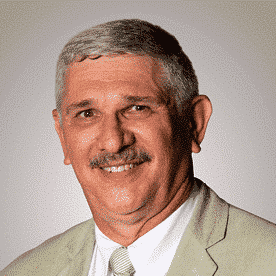Breed Judging – Checking Bites
Several years ago, there was an outcry from exhibitors about judges checking the bites and possibly helping to spread disease from one exhibit to another. As a result, it was suggested by the AKC (and the fancy, in general) to have the handler/exhibitor show the bite to the judge. I, just like most judges, adopted the policy and changed my examination routine to allow for the change.
What all judges discovered was that most exhibitors either do not know how to show the bite properly or have not spent any time teaching their charges how to allow it to be done. What is now common to see in the ring is what I call “Wrestle Mania,” where the handler and the dog have a battle to see who will win.
So, over time, I adapted my bite examination routine so that I have the exhibitor show me the bite as soon as they come in the ring, if they are a class of one, or I go from dog to dog in the class before moving them around as a group; except in the case of table breeds where I check the bite on the table at the end of my examination. I have found that by doing it this way, when the dog is set up for examination, the hands-on part goes much better.
However, I will never understand why exhibitors and their charges don’t practice this vital part of the examination process. First, you need to know your standard and what it calls for. Is it front only? Full dentition? Front and sides? Thumb exam only? Or Full Front and Sides, and opening of the mouth? If you are showing the breed, you need to know this. At the same time, if you are the judge it is also your responsibility to know what is required of each breed. If the breed only requires the front, you should not be digging around in the dog’s mouth and looking for more than what is called for in the standard. I have seen judges who upset the exhibit and the exhibitor when they go looking deeper, and some dogs—especially puppies—don’t handle it well.
Showing the bite to the judge is very much routine to most seasoned veterans, but amazingly, there are still a lot of people who don’t do it properly. Along with knowing what is called for, you need to remember you are showing the bite to the judge and not to yourself. Get your head out of the way and make it easy for the judge to examine it.
Whether you are a new exhibitor or a seasoned veteran, start when the dogs are young so that they learn it’s no big deal. I know that many of us don’t like visiting the dentist and having them dig around in our mouths, but we do it anyway. Your dog is no different and just needs to learn that it is not going to kill him.
Breed Judging – Ramps and Tables
I must admit, I am a huge fan of the ramp and wish many more breeds would start to use it. I am 6’-1” tall and there are many times when I feel the exhibit being examined is a little intimidated by this tall stranger hovering over him or her.
Currently, eight breeds must be judged on a ramp, and another 25 are considered “Ramp Optional” breeds. I simply do not understand why many more breeds are not ramp optional. So many more breeds would look better during the examination by being on a ramp.
When most of us train and evaluate our young puppies, we usually start by stacking them on a grooming table or on training blocks. They learn to stand still this way. If this were to continue in the ring as they grow, I think many exhibits would stand better and not make the examination process as difficult as possible. Another plus is that the ramp brings the dogs up to a height that makes it easier for the judge to examine the dogs, and it can often give him or her a better perspective on the exhibit being examined. The dog is only on the ramp for a few seconds, so I cannot see why it is not an advantage.
When a dog is judged on a ramp or a table, it is also easier on the judges who must bend over a significant number of times during a day’s judging. (This does take a toll on their backs and other body parts.)
One thing that I would remind exhibitors when setting up their dog on a table or ramp is that you should set your dog close to the front of the table or ramp, and as close to the judge’s side of the table so that it is in the perfect place for the judge to examine it without having to reach back or across the table or ramp to examine it. I know it’s easier for you to set it close to you, but remember, you want the judge to be able to give your dog the best examination possible.
Ramps are a great resource, so let us use them more.
Breed Judging – Those Darn Toenails
As a breeder and exhibitor, I know that maintaining a dog’s nails can be an ongoing battle with some dogs. Some people use grinders while others use the clip or cut tools. Most of us start the nailcare process with our puppies when they are just a few days to a few weeks old. When we do them regularly, usually once a week, it is a simple and quick process that most of our dogs tolerate easily. However, when you do not maintain a schedule, you will end up in a battle with some of the more difficult dogs.
I find that in most breeds, people are very good about maintaining nice, clean, short nails. Doberman exhibitors, in particular, are excellent when it comes to maintaining a dog’s nails. Yet, many cases, some exhibitors allow a dog’s nails to grow so long that you can hear them clicking on the matting as they are moved in the ring. Some are so long that they start to look like talons on a bird of prey.
Can you imagine how painful it must be for the dogs when their nails are not maintained? Imagine if you let your toenails grow several inches past the end of your toes. They would most naturally push up against your shoes and back into your toes, causing you great pain. Think about your dog and take the time each week to maintain their nails. As a judge, when I see long nails and hear them clicking on the mat, the message I receive is that the exhibitor is not taking care of the exhibit and is not concerned with overall health and conditioning. There is much more to presenting your dog than a bath and good grooming. Clean teeth, short nails, and proper exercise to keep the athletic body toned are a huge part of your overall presentation.
All dog owners (even those who never show) need to learn to maintain their dogs’ nails. I know that we spend time with each puppy buyer at the time of pick-up to be sure that they know how to grind or clip nails and we tell them that it is an important part of the care of their new puppy. We also state that keeping nails short will stop scratching up their floors and carpets.
Too Many Shows?
There will always be a debate with regard to the question, “Are there too many shows?”
This past weekend I had the pleasure to judge for the Clarksville Tennessee Kennel Club at a two-day event being held in their local community. It was a very nice, small show with a large number of not only owner-handlers but a large group of fairly local exhibitors as well. The entry was on the small side, probably, in part, because there were also 14 other shows being held on the same weekend throughout the country, with several held within a 5-to-6-hour drive of the Clarksville location.
The average entry at these 14 shows was around 800 dogs, with Clarksville being the smallest with 417 and Baltimore County the largest with 1,300. Six of these were part of clusters of three or four days, with the other eight being two-day shows. These smaller local clubs that stay in their home territory would truly benefit from being able to offer three days to their exhibitors. By lowering their cost-per-day expenses and catering to their local area, these clubs could realize the difference between turning a profit or experiencing a loss.
Except for a very few handlers, I find that most exhibitors and judges would prefer to have more of the 2- and 3-day models as opposed to the big 4- and 5-day—and longer—circuits.
Summer Shows
We are getting into the heart of the summer and numerous outdoor show seasons. Remember, it is very important to keep yourself hydrated as well as your dogs. It is during this time of year when we hear of heatstroke and other tragedies to people and dogs. Be prepared and be sure to carry extra fans, ice, water, and other items to keep your dogs and yourself cared for.
Clubs need to be sure to have proper tenting and ventilation as well as an emergency plan should threatening weather show up unexpectedly.
Have a safe and successful summer of shows.
Breed Judging – Wrestle Mania, Ramps & Other Things
By Walter J. Sommerfelt









